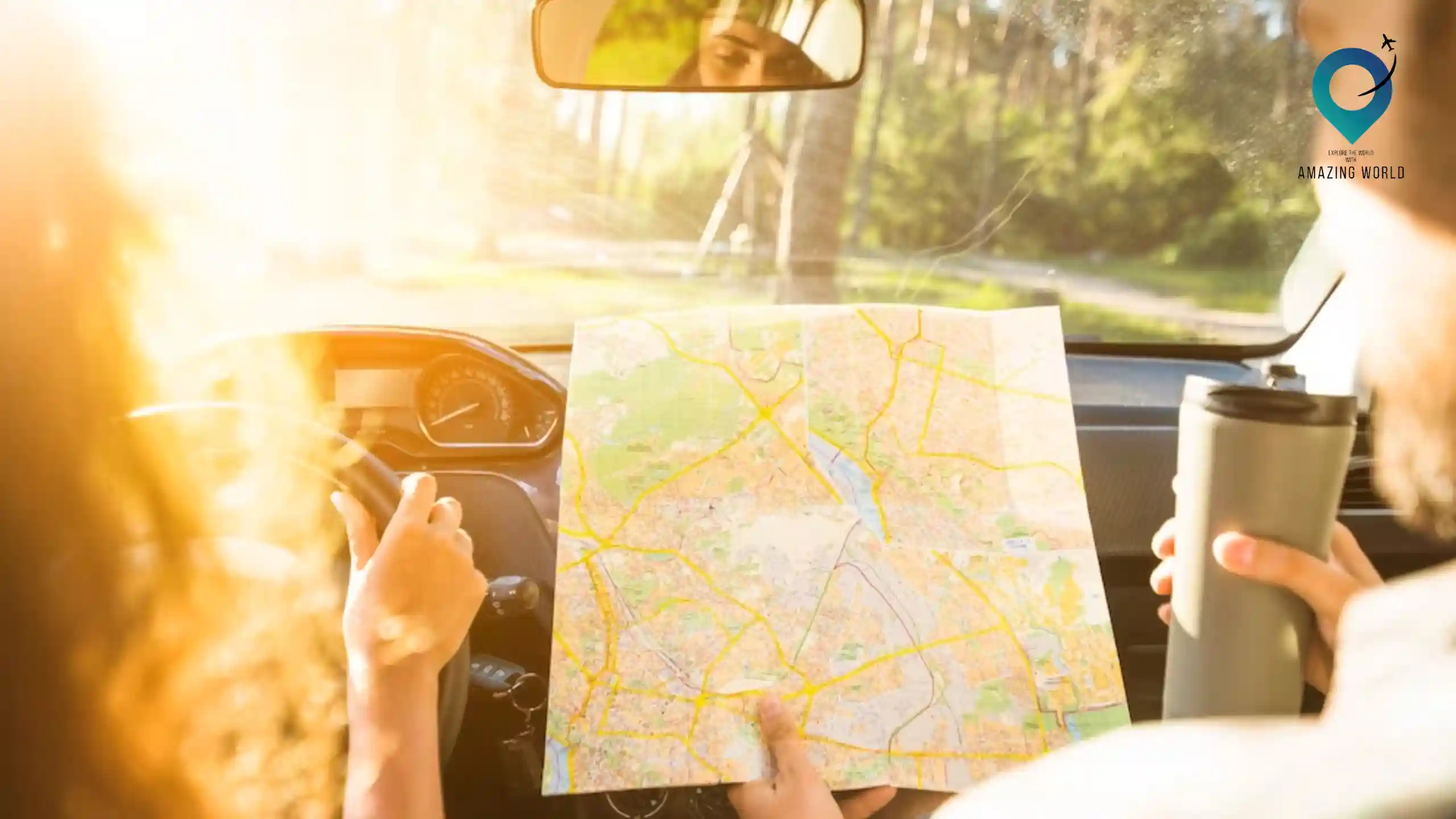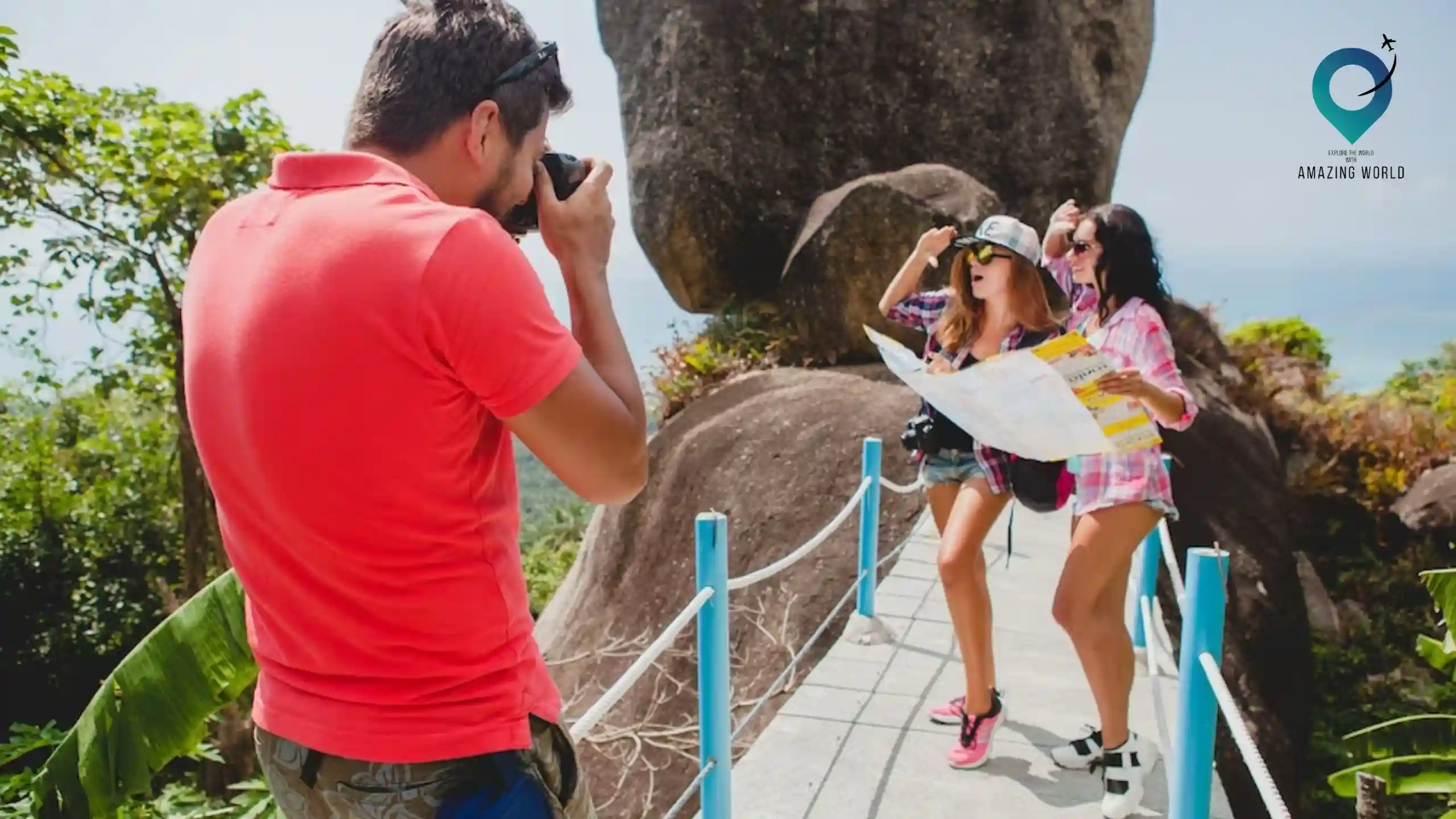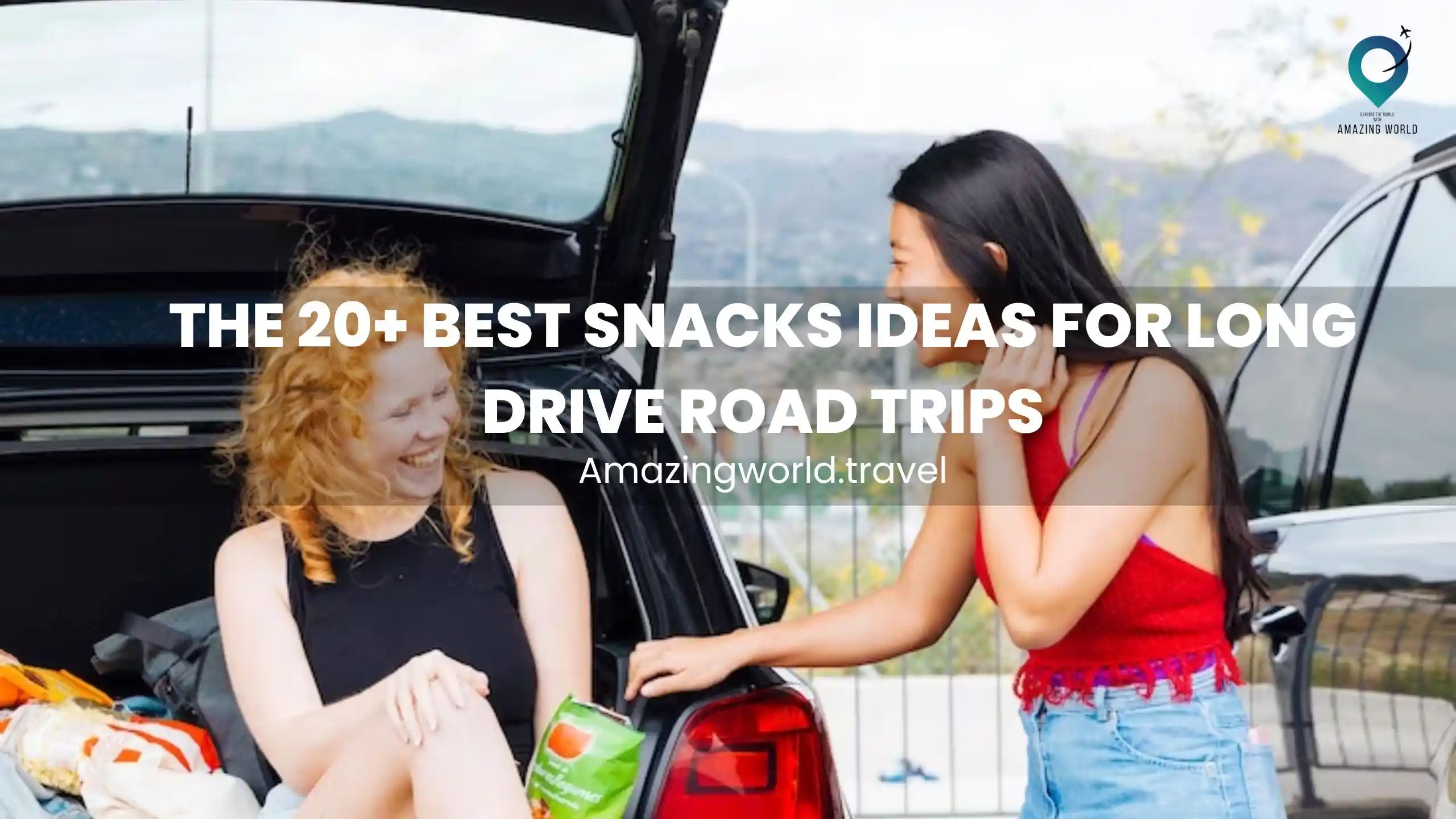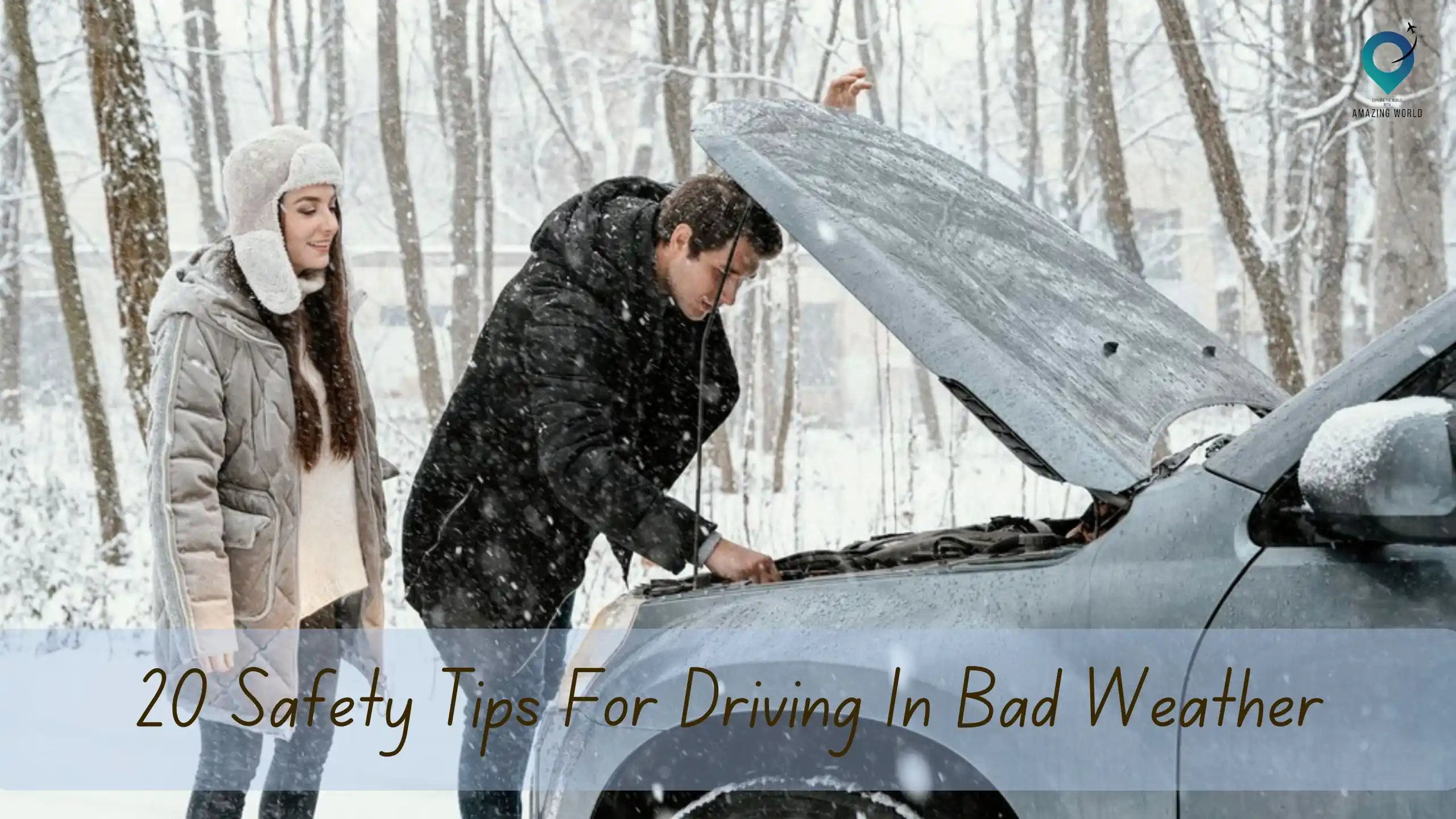Road Trip Etiquette: 20 Tips for Sharing the Road with Others
Table of Contents
Toggle
Are you ready to hit the open road and embark on an unforgettable adventure? A road trip offers the perfect opportunity to explore new destinations, create lasting memories, and escape the monotony of everyday life. However, to ensure a smooth and harmonious journey, it’s essential to practice road trip etiquette.
In this article, we will dive into the world of “Road Trip Etiquette: 20 Tips for Sharing the Road with Others,” guiding you through expert advice and essential insights to make your road trip a resounding success. From planning ahead to navigating traffic, interacting with fellow travelers, and embracing a spirit of respect and consideration, we’ll provide you with the ultimate roadmap to road trip etiquette. So, fasten your seatbelt, rev up your engines, and get ready to discover the keys to a safe, enjoyable, and unforgettable road trip experience.
1. Plan Ahead for Smooth Travel
Planning ahead is an essential aspect of ensuring a smooth and enjoyable road trip experience. By taking the time to prepare and organize, you can minimize potential hiccups and make the most of your journey. Here are some tips for effective trip planning:
- Research your route: Familiarize yourself with the roads and highways you’ll be traveling on. Identify any potential construction or road closures that may affect your route and make adjustments accordingly.
- Check for traffic updates: Stay updated on current traffic conditions to avoid congested areas or find alternate routes if needed. Utilize smartphone apps or online resources that provide real-time traffic information.
- Plan rest stops: Determine suitable places along your route to take breaks, stretch your legs, and use restroom facilities. Look for scenic viewpoints, parks, or rest areas that offer amenities for a comfortable break.
- Consider accommodation options: If your road trip involves overnight stays, research and book accommodations in advance. This ensures you have a place to rest at the end of the day and avoids the stress of last-minute searching.
- Prepare necessary documents: Ensure you have all the required documents for your journey, such as driver’s license, vehicle registration, and proof of insurance. Keep them readily accessible in a secure location within your vehicle.
- Pack essentials: Create a packing checklist to ensure you have all the necessary items for your road trip. This may include clothing, toiletries, snacks, entertainment, maps, GPS devices, and any specific gear for activities along the way.
- Check vehicle condition: Before hitting the road, perform a thorough inspection of your vehicle. Check tire pressure, fluid levels, brakes, lights, and wipers. If needed, take your vehicle for a professional service to address any maintenance or repair needs.
- Create an itinerary: While allowing room for spontaneity, it’s helpful to have a rough itinerary outlining major stops, attractions, or activities you’d like to experience. This provides a loose framework for your journey and helps you make the most of your time.
- Share your itinerary: Inform a trusted friend or family member about your travel plans, including your route and estimated arrival times. This ensures someone knows your whereabouts and can provide assistance if needed.
By planning ahead, you can easily navigate your road trip, reducing stress and increasing the likelihood of a smooth and enjoyable adventure.
2. Be Mindful of Speed Limits
Respecting speed limits is not only a legal requirement but also a responsible choice. Adjust your speed according to the posted limits and adapt to road conditions, such as heavy traffic or inclement weather, to ensure the safety of yourself and others.
3. Use Indicators and Signals
Using indicators and signals is a crucial aspect of road trip etiquette. These communication tools inform other drivers of your intentions and help maintain a safe and coordinated flow of traffic. Here are some important points to remember when using indicators and signals:
- Lane changes: Before changing lanes, activate your vehicle’s turn signal in the appropriate direction. This alerts drivers around you that you intend to move into a different lane. Make sure to check your mirrors and blind spots to ensure it’s safe to change lanes.
- Turning: When approaching an intersection where you plan to turn, activate your turn signal in advance to indicate your intention. This helps other drivers anticipate your actions and adjust their driving accordingly. Remember to turn off your signal after completing the turn.
- Merging: When merging onto a highway or changing lanes to enter a different roadway, use your turn signal to indicate your intention. Check for a safe gap in traffic, match your speed with the flow of vehicles, and merge smoothly.
- Parking: When parallel parking or maneuvering into a parking spot, signal your intention to other drivers by activating your turn signal. This allows them to anticipate your parking maneuver and adjust their own driving accordingly.
- Roundabouts: When navigating a roundabout, use your turn signal to indicate your exit. Activate the signal before reaching your desired exit, allowing other drivers to understand your intentions and safely yield to you.
- Emergency stopping: If you need to pull over or stop on the side of the road due to an emergency or breakdown, use your hazard lights to warn other drivers. This alerts them to the potential hazard and encourages them to give you ample space.
4. Maintain a Safe Following Distance
Maintaining a safe following distance is crucial for road safety. Leave ample space between your vehicle and the one ahead, allowing for sudden stops or changes in speed. This provides you with adequate reaction time and helps prevent rear-end collisions.
5. Share the Road with Bicycles
Sharing the road with bicycles is an important aspect of road trip etiquette. Bicycles are considered vehicles and have the right to use the road, just like any other motorized vehicle. To ensure the safety of both cyclists and motorists, here are some essential tips for sharing the road with bicycles:
- Give them space: When passing a cyclist, provide ample space to ensure their safety. Leave at least three feet of clearance between your vehicle and the cyclist when overtaking. This helps prevent accidents and gives the cyclist enough room to maneuver.
- Be patient: Bicycles are generally slower than motorized vehicles, especially on uphill climbs or in adverse weather conditions. Exercise patience when driving behind a cyclist and wait for a safe opportunity to pass. Avoid honking or driving too closely, as it can startle the cyclist and create a hazardous situation.
- Check blind spots: Always check your blind spots before changing lanes or making turns. Bicycles may be more difficult to see due to their smaller size, so it’s crucial to be vigilant and ensure there are no cyclists in your blind spots.
- Use turn signals: When making turns or changing lanes, use your turn signals to indicate your intentions to both other motorists and cyclists. This allows cyclists to anticipate your movements and adjust their riding accordingly.
- Avoid “right hooks”: One common cause of accidents involving bicycles and vehicles is the “right hook,” where a vehicle makes a right turn in front of an oncoming cyclist. Before making a right turn, double-check for cyclists approaching from behind or riding alongside you. Yield to the cyclist and let them pass before executing your turn.
- Take care at intersections: Intersections can be particularly dangerous for cyclists. Always scan the intersection carefully before proceeding, and yield to any cyclists who have the right of way. Be patient and avoid rushing through intersections, giving cyclists enough time to cross safely.
- Watch for bike lanes: Many roads are equipped with designated bike lanes. Be aware of these lanes and respect them by not encroaching on them or parking in them. If you need to cross a bike lane, yield to any cyclists and make sure it is safe to do so.
- Avoid distractions: Distracted driving is dangerous for all road users, including cyclists. Avoid using mobile devices or engaging in activities that divert your attention from the road. Stay focused and attentive to your surroundings.
6. Yield to Emergency Vehicles
In the event of an emergency vehicle approaching with sirens and lights activated, it’s crucial to yield the right of way promptly. Pull over to the side of the road and allow emergency personnel to pass, facilitating their swift response to critical situations.
7. Be Courteous at Rest Stops
Rest stops are vital for rejuvenation during long road trips. When utilizing rest areas, be considerate of other travelers. Dispose of trash properly, keep noise levels to a minimum, and respect designated areas for parking, eating, and restroom use.
8. Avoid Distracted Driving
Avoiding distracted driving is crucial for the safety of everyone on the road, including yourself, your passengers, and other motorists. Distracted driving refers to any activity that diverts your attention from the task of driving. Here are some important tips to help you stay focused on the road:
- Put away your phone: Keep your phone out of reach or in a silent mode to minimize distractions. If you need to use your phone for navigation or other purposes, consider using a hands-free option or a phone mount that keeps it within your line of sight without obstructing your view of the road.
- Avoid multitasking: While driving, focus solely on the task at hand – operating your vehicle. Avoid engaging in other activities such as eating, drinking, grooming, or reading. Finish any tasks before getting behind the wheel or pull over in a safe location if you need to address something urgent.
- Set up your controls and entertainment: Before you start driving, ensure your seat, mirrors, climate controls, and entertainment systems are properly adjusted. This minimizes the need for adjustments while on the road, which can distract you from focusing on the traffic.
- Prevent eating and drinking: While it may be tempting to have a quick bite or sip while driving, eating and drinking can divert your attention and impair your ability to react promptly. If you’re hungry or thirsty, pull over to a safe location to consume your food or beverages.
- Secure loose objects: Ensure that any loose objects in your vehicle, such as pets, belongings, or groceries, are properly secured. This prevents them from moving around and causing distractions while you’re driving.
- Take care of children and pets: If you’re traveling with children or pets, provide them with the necessary attention and care before starting your journey. Buckle up children properly in car seats or seat belts, and keep pets safely restrained. Address their needs before or during rest stops to minimize distractions while driving.
- Stay mentally focused: Avoid daydreaming, excessive day or nightdreaming, and other mental distractions while driving. Stay mentally engaged and focused on the road, constantly scanning for potential hazards, and being aware of your surroundings.
- Pull over to handle emergencies: If you need to attend to an urgent matter, such as a phone call or an unexpected situation, safely pull over to the side of the road or into a designated parking area. Deal with the issue before resuming your journey.
9. Be Patient in Traffic Jams
Traffic jams are an inevitable part of road trips. Instead of becoming frustrated, practice patience and maintain a calm demeanor. Avoid aggressive driving behaviors, such as tailgating or frequent lane changes, as they can escalate tensions and increase the likelihood of accidents.
10. Adhere to Parking Regulations
Whether you’re parking at a tourist attraction, hotel, or roadside spot, it’s essential to adhere to parking regulations. Respect designated parking spaces, avoid blocking access points or emergency exits, and be mindful of any fees or time restrictions in place.
11. Share Fuel Costs with Travel Companions
If you’re embarking on a road trip with friends or family, discuss and agree upon a fair arrangement for sharing fuel costs. Open communication and fairness in cost-sharing contribute to a harmonious and enjoyable journey for all.
12. Avoid Excessive Honking
While a friendly beep on the horn can serve as a communication tool, excessive honking can create noise pollution and disturb the tranquility of the road. Use your horn sparingly and only when necessary, such as alerting another driver to a potential hazard.
13. Respect Local Customs and Laws
As you embark on your road trip, you’ll likely encounter diverse customs and laws in different regions. Research and respect the local customs, traffic rules, and regulations of the areas you’ll be traveling through. This ensures a positive experience and fosters cultural understanding.
14. Stay Alert and Well-Rested
Driving while fatigued is a recipe for disaster. Ensure you are well-rested before hitting the road and take regular breaks during long drives. Stay hydrated, maintain a comfortable driving position, and avoid driving for extended periods without breaks.
15. Be Considerate at Toll Booths
When passing through toll booths, prepare your payment in advance to minimize delays. Avoid last-minute lane changes and be mindful of fellow travelers who may also be navigating the toll lanes. This contributes to the overall efficiency and flow of traffic.
16. Communicate Effectively with Passengers
Clear and effective communication with your fellow passengers is vital during a road trip. Discuss driving directions, pit stops, and any necessary breaks beforehand to minimize misunderstandings and ensure a smoother journey.
17. Respect Quiet Hours at Campgrounds
If you’re camping or staying at campgrounds along your road trip, respect quiet hours to allow fellow campers to rest and enjoy their surroundings. Keep noise levels low, especially during designated quiet hours, and be considerate of the natural environment.
18. Be Prepared for Weather Conditions
Weather conditions can change rapidly during a road trip. Stay informed about the weather forecast and be prepared with appropriate clothing, emergency supplies, and vehicle maintenance to handle any unexpected situations that may arise.
19. Offer Assistance to Fellow Travelers
If you come across a fellow traveler in need of assistance, extend a helping hand if it’s safe to do so. Whether it’s offering directions, a jump-start for a dead battery, or calling for roadside assistance, small acts of kindness can go a long way in creating a positive road trip experience for everyone involved.
20. Leave No Trace
When exploring natural wonders or scenic areas, practice the “Leave No Trace” principle. Dispose of waste responsibly, respect wildlife and vegetation, and leave the environment as you found it, ensuring its preservation for future generations.
Conclusion
Practicing road trip etiquette is essential for a safe and enjoyable journey. By following the 20 tips for sharing the road with others, you can ensure a harmonious travel experience while fostering a culture of respect and consideration on the road.
From planning ahead and using indicators to sharing the road with bicycles and avoiding distractions, each tip plays a crucial role in promoting road safety and maintaining a positive atmosphere for all travelers.
How much did you like Our detailed Road Trip Etiquette: 20 Tips for Sharing the Road with Others? Review Also, please share these Blogs with your friends on social media.
Related Article –
- Road Trips Ideas | 12 Tips to Prepare Your Car for a Long Road Trip?
- 150 Best Places to Visit in the United States In 2023
- Road Trip With Kids
- How to Stay Awake While Driving Long Distances
- Audiobooks to Listen to On Your Road Trip
- How to Create an Epic Itinerary Road Trip
- Best Rental Cars For Travel Adventures
Road Trip Etiquette FAQs
How can I avoid road rage during a road trip?
To avoid road rage, practice patience, avoid aggressive driving behaviors, and focus on creating a positive atmosphere within your vehicle. Play calming music, engage in conversation, and take regular breaks to alleviate stress.
What should I do if I witness an accident while on a road trip?
If you witness an accident while on a road trip, prioritize your safety and the safety of others. Pull over at a safe distance, contact emergency services, and provide any necessary assistance while keeping yourself out of harm’s way.
Is it necessary to carry a first aid kit on a road trip?
Carrying a well-stocked first aid kit is highly recommended for any road trip. It can help you address minor injuries or provide essential supplies until professional medical help arrives.
How can I minimize the risk of car breakdowns during a road trip?
To minimize the risk of car breakdowns, ensure your vehicle is well-maintained before embarking on a road trip. Check fluid levels, and tire pressure, and perform any necessary repairs or servicing. Additionally, consider carrying a spare tire, jumper cables, and basic tools in case of emergencies.
Are there any specific rules I should follow when traveling with pets on a road trip?
When traveling with pets, ensure their safety and well-being by securing them in a pet carrier or utilizing pet restraints. Plan for regular breaks to allow your pet to stretch their legs, hydrate, and use the restroom.
What should I do if I get lost during a road trip?
If you find yourself lost during a road trip, remain calm and pull over at a safe location. Use GPS navigation systems or consult road maps to determine your location and find the appropriate route. If needed, ask for directions from reliable sources such as gas stations or fellow travelers.

Meet David Hoper, a passionate travel Blog writer with 7+ years of experience in travel content. Through his exemplary storytelling and engaging narratives, he shares his experiences and brings destinations to life. With a keen eye for detail and a love for exploration, he has cultivated a diverse portfolio of travel blogs that inspire and inform readers worldwide.








